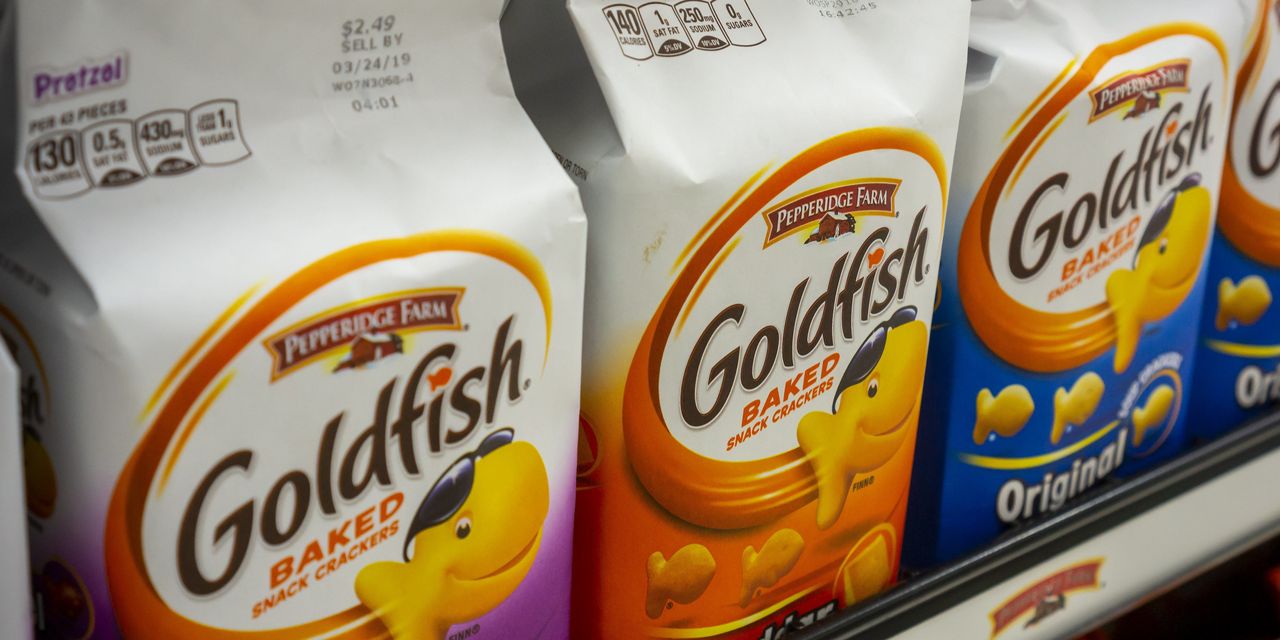
Campbell Soup CPB -1.35% is close to turning a decisive corner after a challenging year, but it isn’t quite there yet.
The snacks and soup maker reported decent earnings last week and unveiled new targets for sales and profitability at an investor event on Tuesday. But it faces near-term inflation pressures, and its innovation capabilities under new management haven’t yet been fully demonstrated.
Chief Executive Mark Clouse joined the company in January 2019 after a tumultuous period marked by steep declines in its namesake soup brands and an activist challenge. He pledged to stabilize the soup business while driving growth in the snacks business, which includes brands like Pepperidge Farm and Kettle chips.
He was only getting started when the pandemic, which proved to be a mixed blessing for Campbell and its peers, struck. Sales soared, but at the same time efforts to innovate and renovate brands, while they continued at Campbell and elsewhere, went on the back burner as meeting surging demand took precedence. Now the tail end of the pandemic is being characterized by inflation and shortages of inputs from ingredients to labor.
In the three months through Oct. 31, Campbell reported mixed results that nonetheless pleased investors. Organic sales, which strip out the impact of acquisitions, divestitures and currency movements, fell 4% from a very high level a year earlier. Margins also declined because of input inflation, with adjusted gross margins falling by 2 percentage points from a year earlier to 32.5%. Still, investors seemed confident that margins can recover once the company’s latest round of price increases takes effect in January. Shares rose 6.2% in the four sessions following that report.
On Tuesday, Campbell said it is aiming for organic sales growth of 2% a year over the next three fiscal years and annual growth of 4% to 6% in adjusted earnings before interest and taxes. Achieving the first target will largely depend on continuing to innovate and improve quality in its meals and beverages segment, which includes soup and sauces like Prego. Achieving the second will depend on expanding margins in the snack business.
The company said Tuesday that it aims for 3.5% of net sales to come from new products by fiscal 2025, in line with current industry averages but up from around 2% at the company now and 1% before Mr. Clouse took over.
Under his leadership the company is at last making the right moves to catch up with customer preferences such as removing high fructose corn syrup from its entire line of condensed soups.
The snacks business accounts for around half of total company sales and was increasing sales at a respectable clip of around 3% a year even before the pandemic. Analysts have long focused on its low margins relative to peers, though. Campbell itself estimated Tuesday that its snacks operating margin of around 13% in fiscal 2021 was well below the industry average of around 21%, and set a target of raising it to 17% by fiscal 2025.
Campbell is in a better position now than it has been in many years, but its transformation isn’t complete. As the food market normalizes following the pandemic, it will be on the company to prove—to consumers as well as investors—that it really has made the changes needed to stay relevant.
Heard Stock-Picking Leaderboard
Write to Aaron Back at [email protected]
Copyright ©2021 Dow Jones & Company, Inc. All Rights Reserved. 87990cbe856818d5eddac44c7b1cdeb8
Appeared in the December 15, 2021, print edition as ‘Campbell Soup Is Getting Warmer as It Makes Some of the Right Moves.’








